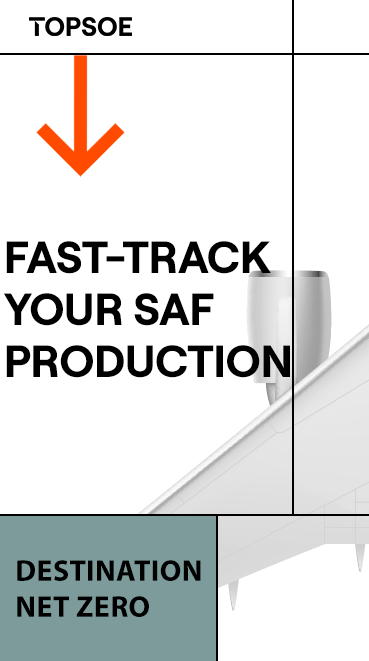DHL signs 3-year SAF purchase agreement with AFKLMP

DHL Global Forwarding, the air and ocean freight specialist of Deutsche Post DHL Group, has signed an agreement with Air France KLM Martinair Cargo (AFKLMP) for the purchase of 33 million liters (8.7 million gallons) of sustainable aviation fuel (SAF). The three-year cooperation represents one of the most significant SAF purchases in the freight-forwarding industry, according to the company.
DHL Global Forwarding stated it is excited about this new endeavor with AFKLMP, which has been a long-term, reliable partner and one of the leaders in the group’s GoGreen carrier certification program for many years. The initiative is part of Deutsche Post DHL Group’s Sustainability Roadmap, which aims to spend 7 billion euros (USD$8 billion) on green technologies by 2030 and reduce all logistics-related emissions to zero by 2050.
“With our Sustainability Roadmap, we have set ourselves ambitious goals on our journey towards zero emissions,” said Tim Scharwath, CEO DHL Global Forwarding, Freight. “Sustainable fuels are a fundamental part of our efforts. That is why we have committed to covering at least 30 percent of air freight and ocean freight fuel requirements with sustainable fuels by 2030. Our partnership with AFKLMP will help us achieve that goal. At the same time, it serves as another example of the success of our ‘book-and-claim’ system, which ensures that reductions in Scope 3 emissions are attributed to our customers. We must all work together to accelerate the transition to a low-carbon—and ultimately zero-carbon—emissions transport sector. After all, we only have one planet.”
The collaboration underpins DHL’s efforts to support sustainability, recognizing the vital role of SAF in decarbonizing the air freight industry. The logistics expert expects the partnership to save more than 80,000 tons of carbon dioxide emissions by blending SAF with regular aviation fuel in AFKLMP flights. The higher proportion of SAF, the lower the carbon emissions. This way, actual carbon reduction is achieved. DHL allocates the benefits to its customers, helping them reduce their carbon footprint.

“The Air France KLM Martinair Cargo teams are strongly committed and feel responsible for creating a sustainable future for our industry,” said Adriaan den Heijer, executive vice president of Air France KLM Cargo and managing director of Martinair. “This deal is a great opportunity to accelerate our joint sustainability efforts. SAF has a lot of potential to reduce CO2 emissions and we are delighted to collaborate with our strong, long-term partner DHL Global Forwarding on this journey to greener logistics and transportation in the coming years.”
DHL’s partnership with AFKLMP will work similarly to earlier collaborations, with customers benefiting from the partnership through a “book-and-claim” system. When purchasing a DHL service, they can select the sustainable option. The related Scope 3 emissions reduction will be credited to their account. Since it is nearly impossible both technically and logistically to physically track SAF from production to the airplane, “book and claim” offers a digital accounting system to track and transfer emissions reductions from sustainable fuels across the value chains. Companies can own SAF by buying and selling it without physically tracing the fuel through the supply chain. This makes SAF accessible for companies of all sizes and locations.
As part of its Sustainability Roadmap and Mission 2050, Deutsche Post DHL Group has made a commitment to set science-based targets for reducing greenhouse gas emissions and will spend 7 billion euros through 2030 in clean operations to lower emissions to under 29 million tons. One key aspiration is to become the leader in sustainable aviation. To achieve this, Deutsche Post DHL Group will increase the blend of SAF in its operations to 30 percent or higher by 2030. The Group’s GoGreen carrier evaluation program gives preference to carriers with strong environmental performance. Air France KLM Martinair is one of DHL Global Forwarding’s key carriers and has been one of the top three GoGreen carriers for many years.
In October, Air France KLM Group committed to having its CO2 emissions reduction targets validated by the science-based targets initiative SBTi), ensuring that its targets are in line with the Paris Agreement. Air France-KLM is one of the first European airline groups to have its decarbonization trajectory validated by SBTi. This new important step in the group's decarbonization strategy comes in addition to its objective of net zero emissions by 2050.
Air France-KLM’s decarbonization trajectory includes an ambitious plan to renew the group’s airline fleet with next generation aircraft emitting 20 to 25 percent less CO2. Between 2019 and 2021, the group invested 2.5 billion euros (USD$2.86 billion) in fleet renewal.
Also, the search for greater efficiency in its operations by favoring more direct trajectories and applying procedures that limit fuel consumption (lighter aircraft, single-engine taxi, continuous descent) are part of AFKLMP sustainability efforts. Air France and KLM have set themselves the target of carbon neutrality for ground operations by 2030.
In addition, Air France-KLM is mobilizing the entire sector and is committed to developing innovative solutions for aircraft design and maintenance, engines, and synthetic fuels, which will gradually lead to carbon-free aviation.






















-RKstandin.jpg)
_gif.gif)




